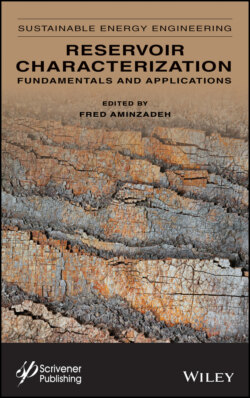Читать книгу Reservoir Characterization - Группа авторов - Страница 43
3
Anomaly Detection within Homogenous Geologic Area
ОглавлениеSimon Katz1⋆, Fred Aminzadeh2, George Chilingar2 and Leonid Khilyuk1
1Russian Academy of Natural Sciences, US Branch, Los Angeles, California
2Petroleum Engineering Program, School of Engineering, University of Southern California
Abstract
This paper describes the development and investigation of a methodology and multi-step algorithms for the detection of geologic anomalies. The algorithms presented in this paper belong to the group of machine learning one-class classification techniques. The developed methodology includes the following steps: (a) compiling a single-class training set that includes data recorded in a known homogeneous area, (b) construction of universal anomaly detection classifiers (AD classifiers) and high-resolution classifiers specifically designed for detection of an anomaly of a certain type, (c) construction of adaptive AD classifiers, and (d) testing a hypothesis about an anomaly type using data from the part of the anomaly detected by the AD classifier and from the training set.
Three basis AD classifiers were suggested and tested for identification of anomalies: (a) distance-from-the-center of the training set, (b) sparsity of neighbors from the training set in the vicinity of a tested record, and (c) divergence from the center of the training set. Distance-from-the-center of the training set and sparsity of neighbors are universal and may be used for detection of anomalies with unknown properties and for optimization of adaptive classifiers. Divergence is a specialized classifier designed for detection of anomalies with known properties. New adaptive classifiers presented in the paper may be used for detection of anomalies of unknown type with efficiency superior to universal classifiers. The performed tests with the developed algorithms demonstrate the high efficiency of the developed one-class classifiers in the detection of gas-filled sands as anomalies even when moderate size training sets were utilized. A hypothesis test about anomaly type had statistically significant results in the wide range of test set sizes when an adaptive classifier was used for anomaly detection.
Keywords: Anomaly detection, one-class classification, posterior ROC-curve analysis, optimization, seismic velocities, rock density, brine, gas, shale
